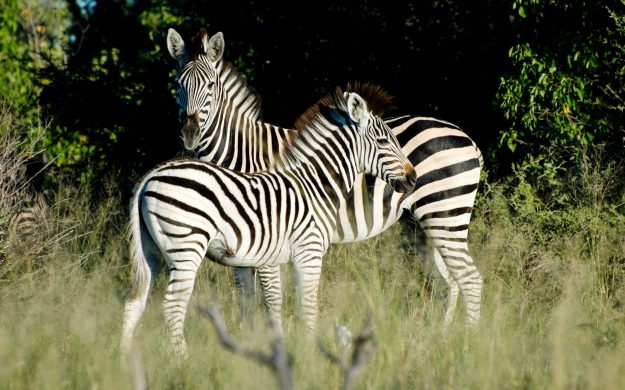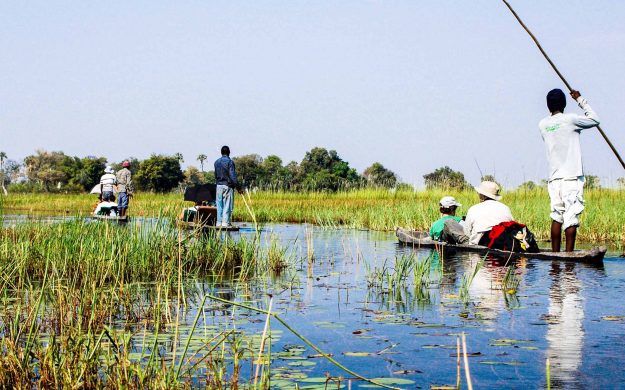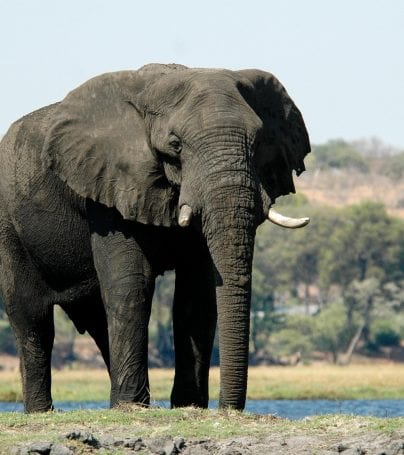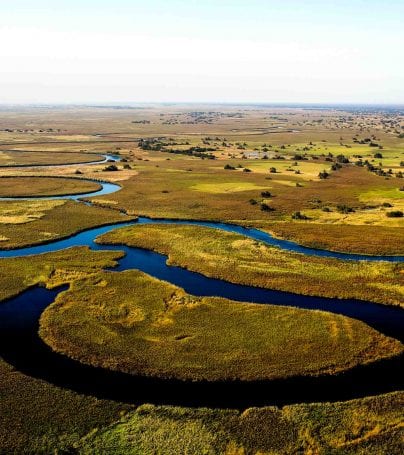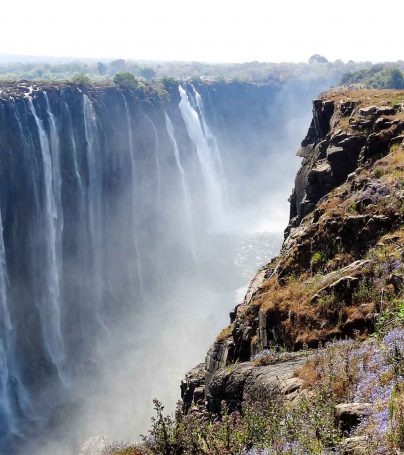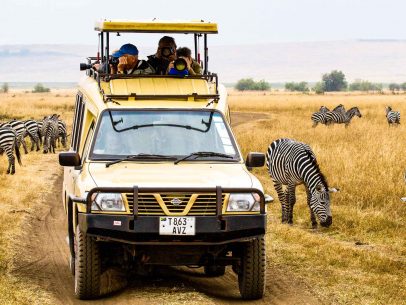Chobe National Park Adventure Tours
Chobe National Park, situated in northwest Botswana, is one of the largest games concentration in all the Africa continent and one of the world’s last remaining sizeable wilderness area. By size, this is the third largest park of the country, after the Central Kalahari Game Reserve and the Gemsbok National Park, but definitively the most diverse and spectacular. This is also the country’s first national park.
The park can be divided up to 4 areas, corresponding each to one distinct ecosystems:
- The Serondela area (or Chobe riverfront), situated in the extreme northeastern section of the park, has as main geographical features lush plains and dense teak forests. The Chobe River, which flows along the northeastern border of the park, is a drinking spot for elephants and buffalos at dry season. The famous bee-eater is also spotted here, along the river. This is probably the most visited park section, partly because of its proximity to the Victoria Falls. The town of Kasane, situated at the river, is the most important town of the region and serves as northern entrance to the park.
- The Savuti Marsh area, 10 878 km² large, constitutes the western stretch of the park (50 km north of Mababe Gate). The Savuti Marsh is the relic of a large inland lake whose water supply was cut a long time ago by tectonic movements. Nowadays the marsh is fed by the erratic Savuti Channel, which dries up when rainfall is abundant and floods up at other times. The channel can also stop flowing during long periods then curiously flows again, a consequence of tectonic activity in the area. As a result of this variable flow, there are hundred of dead trees along the channel’s bank. The region is also covered with extensive savannahs and rolling grasslands, which makes wildlife particularly dynamic in this section of the park. At dry seasons, tourists going on safari often view warthogs, kudus, impalas, zebras, wildebeests and above all elephants bullying each other. At rain seasons, the rich birdlife of the park (450 species in the whole park) is well represented. Packs of lions, hyenas, zebras or more rarely cheetahs are visible as well. This region is indeed reputed for its annual migration of zebras and predators.
- The Linyanti Marsh, located at the northwest corner of the park and to the north of Savuti, is adjacent to Linyanti River. To the west of this area lies Selinda Reserve and on the northern bank of Kwando River is Namibia’s Mamili National Park. Around these 2 rivers are riverine woodlands, open woodlands as well as lagoons, and the rest of the region mainly consists of flood plains. There are here large concentrations of lions, leopards, wild dogs, Roan antelopes, Sable antelopes, hippopotami, and above all enormous herds of elephants. The rarer red lechwe, sitatunga, or crocodile also occur in the area. Birdlife is very rich here.
- Finally, between Linyanti and Savuti Marshes lies a hot and dry hinterland, mainly occupied by the Nogatsaa grass woodland. This section is little known and is a great place for spotting elands.
The park is probably best known for its spectacular elephant population: 120,000 elephants today, it is actually the highest elephant concentration of Africa. Moreover, most of them are probably part of the largest continuous surviving elephant population on Earth. The elephant population seems to have solidly built up since 1990, from the few initial thousands. By chance, they have not been affected by the massive illicit exploitation of the 1970s and 1980s. Elephants living here are Kalahari elephants, the largest in size of all known elephant species. Yet they are characterized by rather brittle ivory and short tusks.
Damage caused by the high numbers of elephants is rife in some areas. In fact, concentration is so high throughout Chobe that culls have been considered, but are too controversial and have thus far been rejected.
At dry season, these elephants sojourn in Chobe River and the Linyanti River areas. At rain season, they make a 200-km migration to the southeastern stretch of the park. Their distribution zone however outreaches the park and spreads to northwestern Zimbabwe.
Information based on http://en.wikipedia.org/wiki/Chobe_National_Park
Customize Your Dream Adventure
We are here to help craft tailor-made adventures for individuals, couples, families, and groups of explorers.

